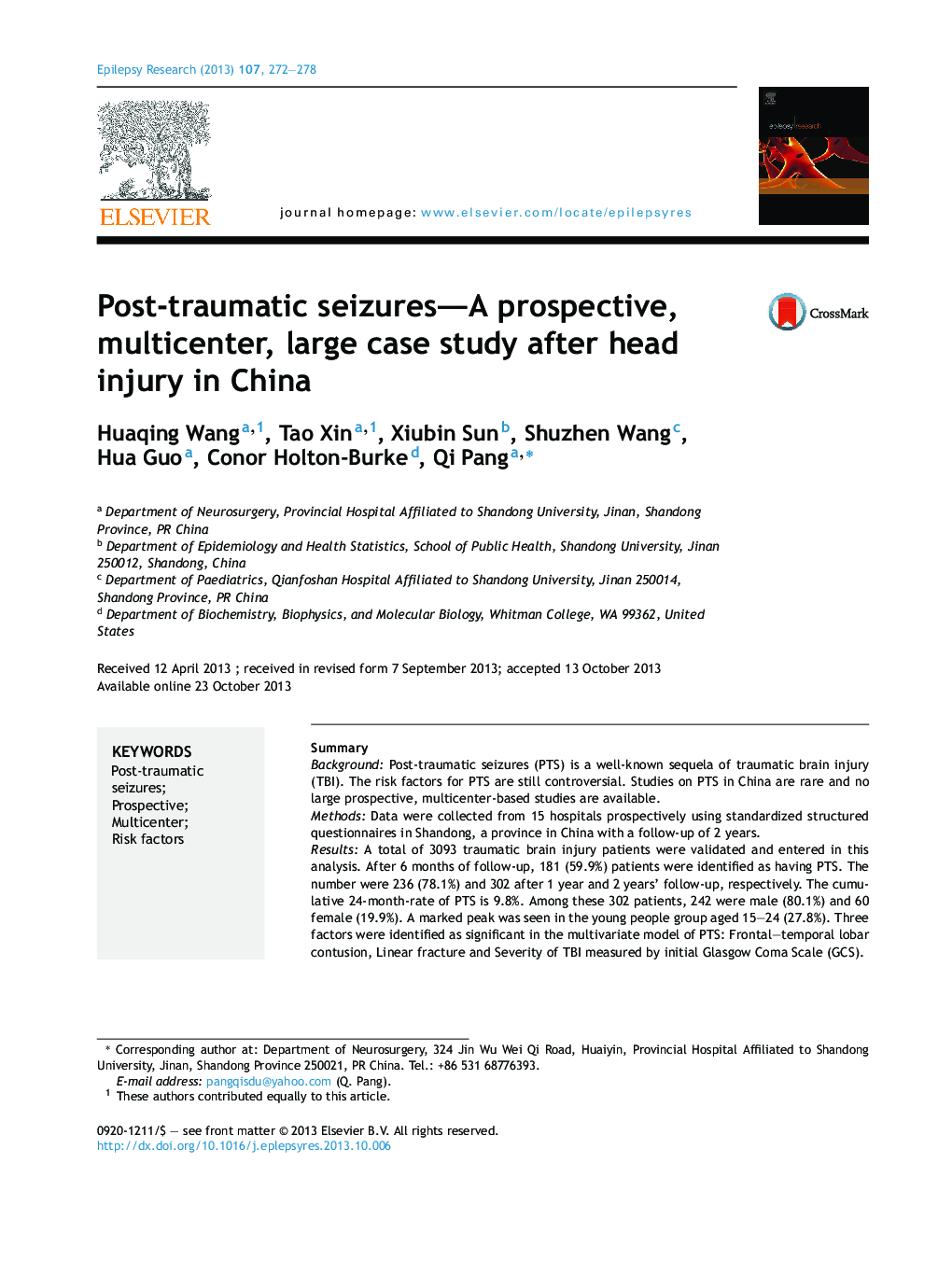| Article ID | Journal | Published Year | Pages | File Type |
|---|---|---|---|---|
| 3052175 | Epilepsy Research | 2013 | 7 Pages |
•We conducted the first prospective and multicenter research on PTS in China.•We collected the data from 15 hospitals prospectively and followed up for 2 years.•Incidence and epidemiologic features of PTS in China were presented.•Three risk factors for PTS were identified and presented.
SummaryBackgroundPost-traumatic seizures (PTS) is a well-known sequela of traumatic brain injury (TBI). The risk factors for PTS are still controversial. Studies on PTS in China are rare and no large prospective, multicenter-based studies are available.MethodsData were collected from 15 hospitals prospectively using standardized structured questionnaires in Shandong, a province in China with a follow-up of 2 years.ResultsA total of 3093 traumatic brain injury patients were validated and entered in this analysis. After 6 months of follow-up, 181 (59.9%) patients were identified as having PTS. The number were 236 (78.1%) and 302 after 1 year and 2 years’ follow-up, respectively. The cumulative 24-month-rate of PTS is 9.8%. Among these 302 patients, 242 were male (80.1%) and 60 female (19.9%). A marked peak was seen in the young people group aged 15–24 (27.8%). Three factors were identified as significant in the multivariate model of PTS: Frontal–temporal lobar contusion, Linear fracture and Severity of TBI measured by initial Glasgow Coma Scale (GCS).ConclusionThis prospective cohort study shows the epidemiologic features and risk factors of PTS in China. Frontal–temporal lobar contusion, linear fracture and severity of TBI measured by initial Glasgow Coma Scale (GCS) are risk factors for PTS. It is essential to establish a standard surveillance system for PTS.
